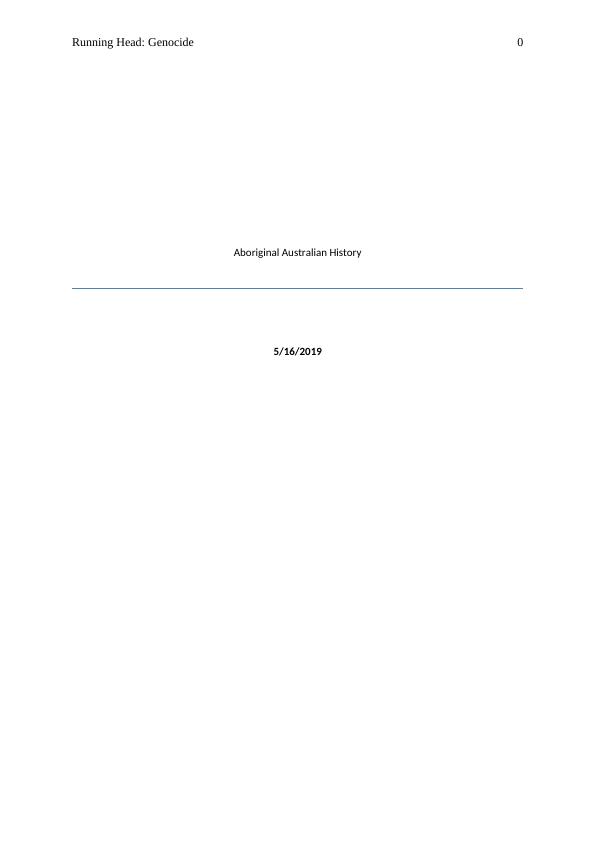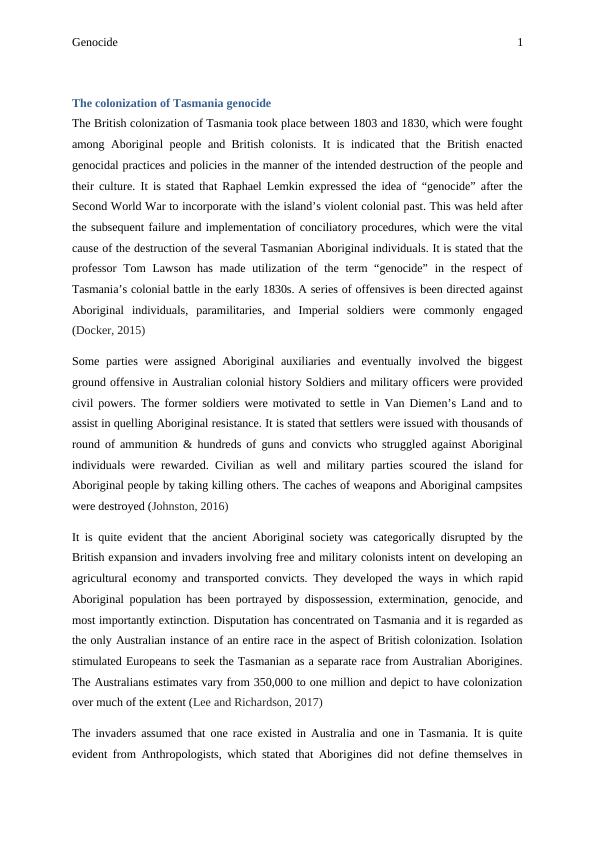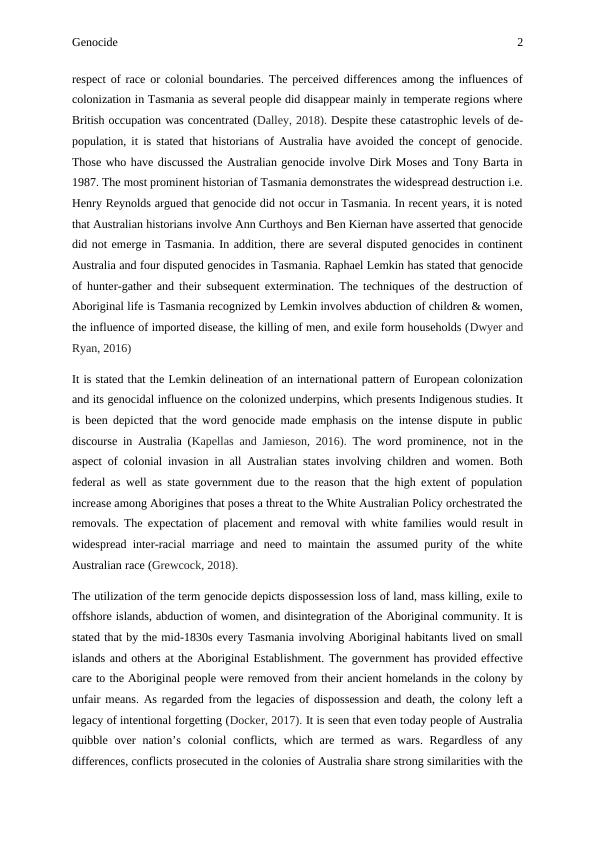Genocide in Tasmania: British Colonization and Destruction of Aboriginal People
Investigate whether the colonisation of Tasmania can be considered as 'genocide' and analyze the implications of using this term in relation to Australian history.
8 Pages2712 Words85 Views
Added on 2023-03-23
About This Document
This article explores the colonization of Tasmania by the British and the genocidal practices and policies enacted against the Aboriginal people. It discusses the destruction of their culture and the ongoing debate about whether it constitutes genocide. The article also examines the impact of colonization on the Aboriginal population and the efforts to memorialize and remember the victims.
Genocide in Tasmania: British Colonization and Destruction of Aboriginal People
Investigate whether the colonisation of Tasmania can be considered as 'genocide' and analyze the implications of using this term in relation to Australian history.
Added on 2023-03-23
ShareRelated Documents
End of preview
Want to access all the pages? Upload your documents or become a member.
Aboriginal Australian History
|5
|1052
|146



